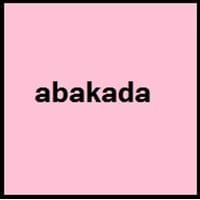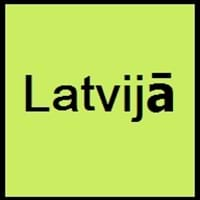Tagalog and Latvian
Countries
Philippines
European Union, Latvia
National Language
Philippines
Latvia
Second Language
Filipinos
Not spoken in any of the countries
Speaking Continents
Asia, Australia
Europe
Minority Language
Australia, Canada, Guam, Hong Kong, New Zealand, Singapore, United Kingdom
Not spoken in any of the countries
Regulated By
Komisyon sa Wikang Filipino, National Languages Committee
Latvian State Language Center
Interesting Facts
- In 1593, "Doctrina Christiana" was first book written in two versions of Tagalog.
- The name "Tagalog" means "native to" and "river". "Tagalog"is derived from taga ilog, which means "inhabitants of the river".
- The first written form of Latvian dates from 16th century was found in religious texts.
- The old latvian language was based on the a Gothic script.
Similar To
Filipino, Cebuano and Spanish Languages
Lithuanian Language
Derived From
Not Available
Not Available
Alphabets in
Tagalog-Alphabets.jpg#200
Latvian-Alphabets.jpg#200
Writing Direction
Left-To-Right, Horizontal
Left-To-Right, Horizontal
Thank You
Salamat po
Paldies
How Are You?
Kamusta ka na?
Kā jums klājas?
Good Night
Magandang gabi
Ar labunakti
Good Evening
Magandang gabi po
Labvakar
Good Afternoon
Magandang hapon po
Labdien
Good Morning
Magandang umaga po
Labrīt
Sorry
pinagsisisihan
Piedodiet!
I Love You
Iniibig kita
Es tevi mīlu
Excuse Me
Ipagpaumanhin ninyo ako
Piedodiet!
Dialect 1
Batangas Tagalog
Livonian
Where They Speak
Batangas, Gabon
Latvia
Dialect 2
Bisalog
Middle Latvian
Where They Speak
Philippines
Latvia
Dialect 3
Filipino
High Latvian
Where They Speak
Philippines
France, Latvia
How Many People Speak
Not Available
Speaking Population
Not Available
Second Language Speakers
Not Available
Native Name
Tagalog
latviešu valoda
Alternative Names
Filipino, Pilipino
Lettish
French Name
tagalog
letton
German Name
Tagalog
Lettisch
Pronunciation
[tɐˈɡaːloɡ]
Not Available
Ethnicity
Tagalog people
Latvians or Letts
Language Family
Austronesian Family
Indo-European Family
Subgroup
Indonesian
Baltic
Branch
Not Available
Not Available
Early Forms
Proto-Philippine, Old Tagalog, Classical Tagalog, Tagalog
No early forms
Standard Forms
Filipino
Latvian
Language Position
Not Available
Signed Forms
Not Available
Latvian Sign Language
Scope
Individual
Macrolanguage
ISO 639 6
Not Available
not Available
Glottocode
taga1269
latv1249
Linguasphere
31-CKA
54-AAB-a
Language Type
Living
Living
Language Linguistic Typology
Object-Verb-Subject, Subject-Verb-Object, Verb-Object-Subject, Verb-Subject-Object
Subject-Verb-Object
Language Morphological Typology
Not Available
Synthetic
All Tagalog and Latvian Dialects
Most languages have dialects where each dialect differ from other dialect with respect to grammar and vocabulary. Here you will get to know all Tagalog and Latvian dialects. Various dialects of Tagalog and Latvian language differ in their pronunciations and words. Dialects of Tagalog are spoken in different Tagalog Speaking Countries whereas Latvian Dialects are spoken in different Latvian speaking countries. Also the number of people speaking Tagalog vs Latvian Dialects varies from few thousands to many millions. Some of the Tagalog dialects include: Batangas Tagalog, Bisalog. Latvian dialects include: Livonian , Middle Latvian. Also learn about dialects in South American Languages and North American Languages.
Tagalog and Latvian Speaking population
Tagalog and Latvian speaking population is one of the factors based on which Tagalog and Latvian languages can be compared. The total count of Tagalog and Latvian Speaking population in percentage is also given. The percentage of people speaking Tagalog language is 0.42 % whereas the percentage of people speaking Latvian language is Not Available. When we compare the speaking population of any two languages we get to know which of two languages is more popular. Find more details about how many people speak Tagalog and Latvian on Tagalog vs Latvian where you will get native speakers, speaking population in percentage and native names.
Tagalog and Latvian Language Codes
Tagalog and Latvian language codes are used in those applications where using language names are tedious. Tagalog and Latvian Language Codes include all the international language codes, glottocodes and linguasphere.





